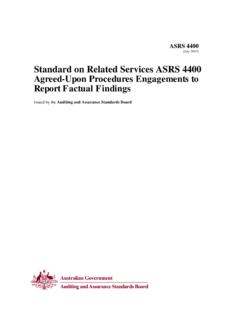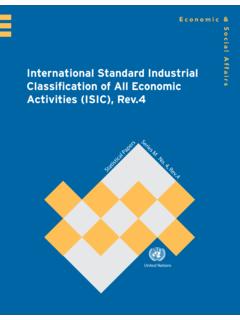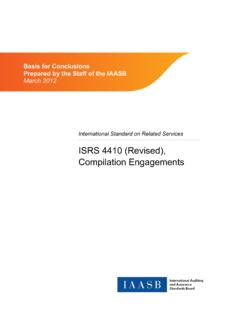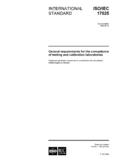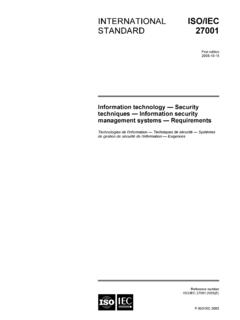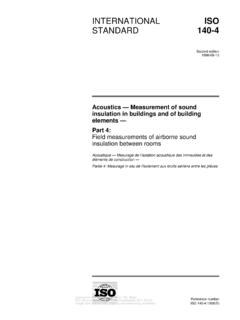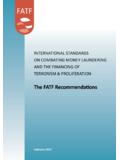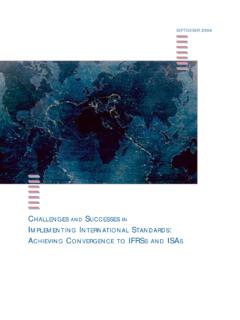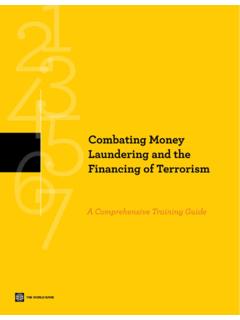Transcription of INTERNATIONAL STATISTICS on CRIME AND JUSTICE
1 HEUNIEUROPEAN INSTITUTE FORCRIME PREVENTION AND CONTROL,AFFILIATED WITH THE UNITED NATIONSE dited byS. Harrendorf, M. Heiskanen, S. MalbyINTERNATIONAL STATISTICS on CRIME AND JUSTICE1 European Institute for United Nations Office on Drugs and CRIME (UNODC) CRIME Prevention and Control, PO Box 500 Affiliated with the United Nations (HEUNI) 1400 Vienna Box 444 Austria FIN 00531 Helsinki Finland HEUNI Publication Series No. 64 Stefan Harrendorf, Markku Heiskanen, Steven Malby (eds.) INTERNATIONAL STATISTICS on CRIME and JUSTICE Helsinki 2010 2 ISBN 978 952 5333 78 7 ISSN 1237 4741 Disclaimers This report has not been formally edited.
2 The contents of this publication do not necessarily reflect the views or policies of the United Nations, UNODC or contributory organizations and neither do they imply any endorsement. The designations employed and the presentation of material in this publication do not imply the expression of any opinion whatsoever on the part of the United Nations or UNODC concerning the legal status of any country, territory or city or its authorities, or concerning the delimitation of its frontiers or boundaries. 3 INTERNATIONAL STATISTICS on CRIME and Criminal JUSTICE Contents Kauko Aromaa 5 1 Steven Malby 7 2 Trends in police recorded Markku Heiskanen 21 3 Drug Steven Malby 49 4 Complex Anna Alvazzi del Frate 65 5 Responses of the criminal JUSTICE Paul Smit and Stefan Harrendorf 87 6 Attributes of criminal JUSTICE systems resources.
3 Performance and Stefan Harrendorf and Paul Smit 113 7 Trends in world prison Roy Walmsley 153 8 CRIME and criminal JUSTICE STATISTICS Anna Alvazzi del Frate 167 4 5 INTERNATIONAL STATISTICS on CRIME and Criminal JUSTICE Introduction Introduction Kauko Aromaa* The United Nations Surveys on CRIME Trends and the Operations Criminal JUSTICE Systems (denoted UN CTS below for the sake of brevity) collect basic information on recorded CRIME and on resources of criminal JUSTICE systems in the Its mandate being Europe and North America, HEUNI has analysed and reported on the surveys for this part of the world from the very beginning.
4 For other regions of the world, such reporting has not been achieved. The present volume, prepared in partnership of HEUNI and the UNODC, for the first time pulls together global responses to the UN CTS questionnaire, the most recent one included here is UN CTS 10 that allows the analysis of data up to 2006. In the current report, the improvement introduced in the previous one (looking only at Europe and North America; Aromaa and Heiskanen 2008) was retained: also this time, the report addresses a time period of about ten years in order to provide more stability to the situation assessment.
5 In a global report, it is more difficult to keep to the ten year framework since many countries have not responded regularly but data gaps are frequent. In this case, the basic solution has been that data for 1996, 2000, and 2006 are used for the ten year (actually, eleven year) perspective to be covered. For many countries, this could be achieved, for many others, one or more of these years had to be complemented by data for adjacent years because the country response for one (or several) of the required years had not been made available.
6 Reporting for more recent years has not been possible. This may not be satisfactory to those who require more up to date information. However, the timeliness of large scale comparative data has always been a significant problem and remains one. First of all, statistical data on CRIME and criminal JUSTICE are typically not available until after the relevant year. Country level data on police recorded CRIME are often released relatively soon after the shift of the year, but STATISTICS on later stages of the criminal JUSTICE procedure are more delayed.
7 Next, disseminating the UN CTS data collection instrument to collecting and validating the responses, drafting a reporting plan and creating a database necessary for the analysis, analysing the data and writing up the report are stages in the process that cannot be avoided, and they do consume time. As a consequence, reports of this kind are always providing results that do not refer to the current year or the previous one but will shed light on the situation 3 4 years back in time. So far, ways to introduce significant improvements to this dilemma have not been found.
8 For many, a delay of 3 4 years would seem to be too long for an up to date assessment of the current situation, whether globally or for one region only, even considering that experience has shown that CRIME data of the kind analysed here usually do not vary radically over short time periods. A marked improvement would however require much more advanced statistical systems in many tates, and a much higher priority to be given to the UN data collection exercise than is the case today. Another, even more disturbing observation that has been made repeatedly is that many continue to be unable to answer the UN CTS questionnaire at all, or are only able to provide a partial response.
9 This state of affairs is in part due to a very basic reason: some or all of the required data are not available. However, less excusable is the situation for many other countries that are known to possess the required data but do not respond. * Director, European Institute for CRIME Prevention and Control, affiliated with the United states,memberstatesmembers6 For those in need of improving their STATISTICS , the UNODC has been working on a support and assistance approach which is also bearing fruit in the long term.
10 Those that, for a multiplicity of reasons, have failed to respond to the Surveys although they are in the possession of the relevant data, should take this task more seriously in the future. This would also be in their own interest as they would benefit from knowing their position in a global dataset. Also others in the global community would be keen to know how others have been doing in core issues of CRIME and criminal JUSTICE . Some of the unavoidable delay problems have been partially resolved by the UNODC in that they publish some data from the country responses on their website as soon as they are made available by the The advantage is that the delay is as short as it can be under the circumstances, where national responses are the basis.










